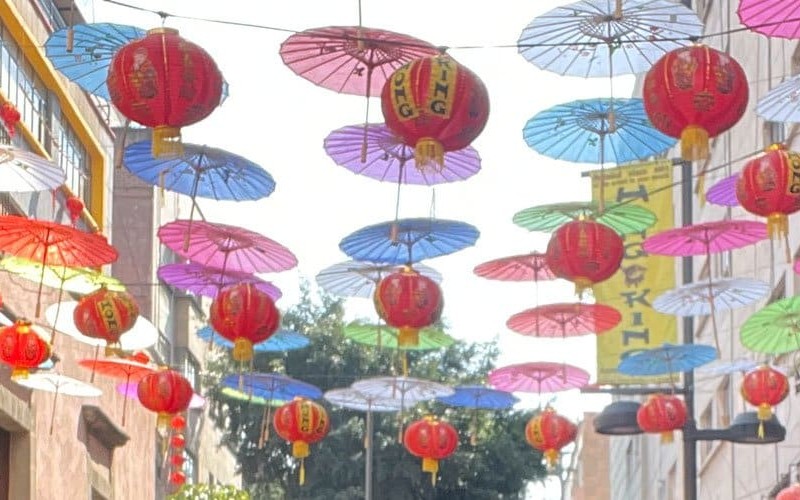Exploring Asian Heritage in Latin America
Ever wonder about the Asian-Latin American cultural mix? It’s a fascinating history of cultural fusion.

The story of Asian Latin Americans is a tale as old as the mighty Pacific Ocean that links Asia with the Americas. Beneath the surface, Latin America holds a tapestry rich with Asian influences, from its bustling cities to its lively cultural fabric.
The First Arrivals

Before K-pop or anime gripped the globe, Asians had already set foot in Latin America. The story begins in the 16th century when the Spanish galleons sailed from the Philippines, then a Spanish colony, to the shores of Mexico. These Manila Galleons brought more than just merchandise; they also brought the first Filipino settlers to the region. While many continued on to Spain, some chose to make the Americas their new home.
The 19th century saw a larger influx, especially with the arrival of Chinese laborers, who came to build railroads, cultivate land, and mine for treasures across nations like Peru, Cuba, and Mexico. Their hard work often went unnoticed, and they faced discrimination and adversity, yet their contributions are undeniable.
While the Chinese made their mark on the Pacific coast, the Japanese began to journey across the ocean in the early 20th century, predominantly settling in Brazil. São Paulo’s Liberdade district today stands as a testament to their presence. The vibrant neighborhood, with its sushi bars juxtaposed against traditional Brazilian churrascarias and streets lined with cherry blossoms, is an epicenter of Japanese culture outside of Japan. In fact, Brazil boasts the largest Japanese community outside of Japan itself.
Nestled in the heart of Mexico City, the Barrio Chino is perhaps the most well-known Chinese enclave in the country. Though it spans just a couple of blocks, its impact and significance are much grander. This bustling area is characterized by its distinctive red arches, myriad of shops, and mouthwatering Chinese restaurants serving both traditional dishes and Mexi-Chinese fusion food.

La Chinesca in Mexicali, Baja California, offers a more extensive glimpse into the Chinese diaspora. Home to about 15,000 people of Chinese origin, it is the largest Chinese community in Mexico. La Chinesca is a unique blend of Chinese and Mexican influences. Beneath the city streets lie a series of underground tunnels, originally built as protection against the desert heat, and were often used by Chinese immigrants. These tunnels were places of work, residence, and secret social gatherings at times when Chinese communities faced discrimination.
Today, while many of the tunnels lie dormant, some have been converted into intriguing underground businesses. Above ground, Chinese restaurants and markets dot the landscape, evidence of the lasting influence of the community.
Pop Culture, Food, and the Rise of Representation

The Asian influence didn’t just end with neighborhoods and railways. Anyone who has tasted a Peruvian ‘chifa’ dish or relished a Brazilian ‘temaki’ knows that the fusion of Asian and Latin flavors is a romance for the ages. ‘Chifa’ is a unique blend of Chinese and Peruvian cuisine, birthed from the merging of these two vibrant cultures. Meanwhile, sushi, especially temaki, has been wholeheartedly embraced and reimagined in Brazil, giving birth to a new kind of fast food sushi restaurant called “temakeria.”
Within the world of film and television, Asian Latin Americans are carving a space for their narratives. Films such as “Made in Bangkok“, a documentary about a Mexican opera singer’s journey in Thailand for gender confirmation surgery, bridges Mexican and Asian cultures while addressing universal themes of identity and self-discovery.
On the social media scene, influencers like Keishla He have gone viral simply for being a spanish-speaking Asian Latina. He was born in Puerto Rico and told NBC news that she started posting videos on-line because, “I know I’m not the only Asian that was born here in Puerto Rico and was raised here,” He told NBC Asian America. “So I wanted to be that person that they can look up to and say, ‘OK, I’m not the only one,’ so they don’t feel alone.”
K-pop, while inherently Korean, has found a massive fanbase in Latin America, leading to fascinating cultural exchanges. Latin rhythms have begun to infiltrate K-pop music, and in return, K-pop concerts are now regular occurrences in many major Latin American cities.
In the art scene, Tomie Ohtake, a Japanese-Brazilian artist, has left an indelible mark with her abstract art in São Paulo. Her work seamlessly fuses the minimalist tendencies of Japanese art with the vivacious energy of Brazil.
From the early footprints left by Filipinos on Mexican shores to the sizzling woks of chifa kitchens in Lima and the beats of Brazilian music infused with Japanese notes, the story of Asian Latin Americans is beautifully complex. It’s a story of integration, innovation, and identity.
As the world increasingly blends into a global village, the tales of Asian Latin Americans serve as an inspiring reminder of the enriching beauty of cultural intersections.




